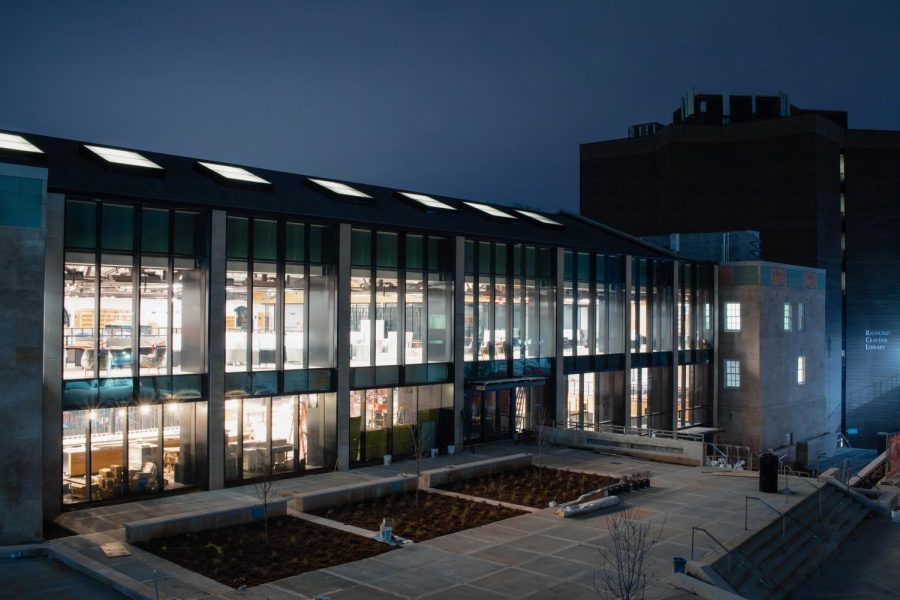‘I went to school there?’: University plan marks new era of campus for next generation of students
The Commons At Helm Library illuminate the walkway beside the Fine Arts Center. Chief Facilities Officer Bryan Russell said the building is “extremely close” to being operational.
Editor’s Note: Due to a transcription error, a quote from Bryan Russell incorrectly stated that it cost more to demolish Garrett Conference Center than to repair it. This is not the case, and the quote has been corrected. The Herald regrets this error.
A field of grass now blankets the spot where generations of students studied for degrees in education, military science, professional studies and more. Tate Page Hall, originally known as the Education Complex, was torn down in 2021 after over 50 years of use.
The view from Guthrie Tower now offers a straight shot toward the First Year Village, which first opened to students last semester. The view from the Kissing Bridge was similarly transformed with the demolition of Garrett Conference Center, 70 years after its construction.
All of this is part of WKU’s 10 year Campus Master Plan, an effort to “modernize and update” the campus, according to Chief Facilities Officer Bryan Russell.
“We’re making history, you’re living in history,” Russell said. “And you’re gonna go, in some time, ‘I went to school there?’”
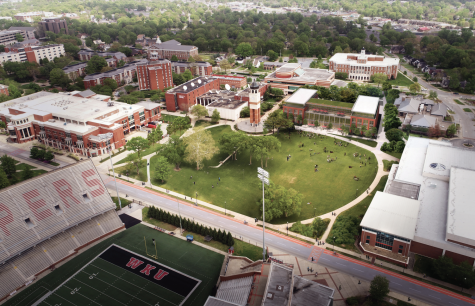
The plan is the product of years of work by administration, students, business firms and architects. The Board of Regents approved the plan in March 2021 at the recommendation of its Steering Committee, made up of Russell, President Timothy Caboni and other high-level administrators.
“Universities typically will do a master plan that sets guiding principles — what’s the bigger idea for the university, what direction do we want to take going forward,” Russell said.
The plan identifies five “guiding principles” intended to frame the design process from the start. In general, they aim to improve accessibility on campus, create new business opportunities, foster a welcoming atmosphere and connect students with the community.
Three major projects are highlighted throughout the plan: The First Year Village, The WKU Commons At Helm Library, and Hilltop Planning Study.
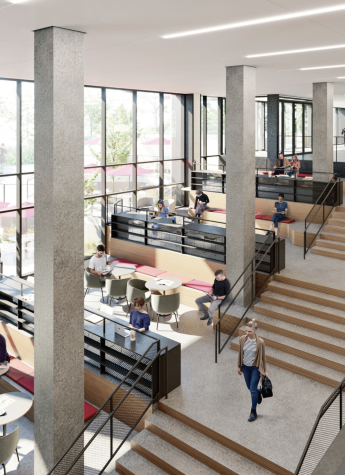
The Commons began construction in 2019 but fell behind schedule due to supply chain and labor issues brought on by the COVID-19 pandemic, Russell said.
Caboni spoke with Herald staff on Feb. 1 and said it will open this semester “even if I’ve got to go in there and paint and throw the doors open myself.”
The project is “extremely close” to a temporary certificate of occupancy, which certifies a building as safe to use before official completion, according to Russell. The university would be given a timeframe in which they must complete the building.
“We anticipate getting that [certificate] this month, and all that means is that then we can start occupying the building,” Russell said. “It means that we can start utilizing it, preparing to bring in our food company, Aramark, and others there, and training people to get it prepared.”
While no opening date has been set, Russell is confident that students will have access this semester.
“I don’t think we’re not going to [open this semester], I just think it’s a matter of what day it is,” Russell said. “That’s how close we are. A lot of work to do, but we’re getting really close.”
Dining options will include Panda Express, Moe’s Southwest Grill, Spencer’s Coffee, Rising Rolls and Bène Pizzeria. It will also host rotating vendors, the first being Road Trip Through America, according to Jace Lux, director of media relations.
The project is partly funded by the mandatory Flex Dollars fee for students who opt out of a meal plan, per WKU’s contract with it’s dining provider, Aramark.
The completion of The Commons will mark a major milestone to the top of the Hill, but the plan does not stop there. The Hilltop Planning Study, designed by Louisville-based architecture firm Luckett & Farley, will redirect traffic from Hilltop Drive away from campus.
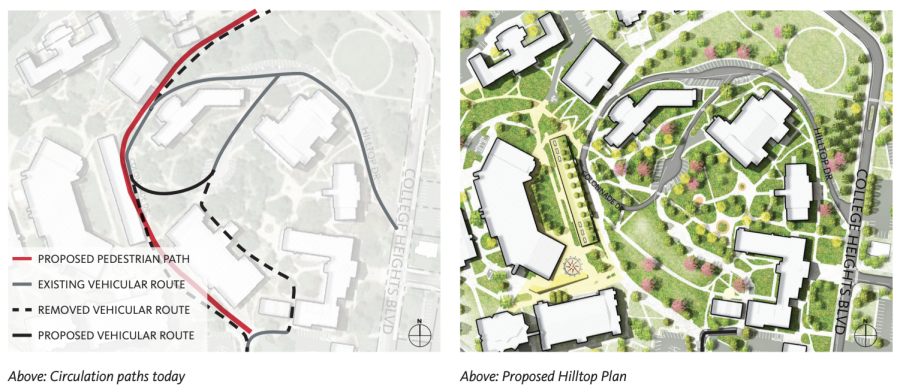
(Luckett & Farley)
“The proposed solution removes all through traffic between College Heights Boulevard and State Street, developing a singular ‘loop’ drive which will greatly reduce traffic flow on the hill,” the plan states. “The solution maintains service areas at Van Meter Hall as well as accessible parking on the hill.”
Along with reducing traffic, the change will allow pedestrians to travel across campus without crossing roads.
“Several of these things we talked about are basically about pedestrian safety — moving vehicular traffic on the outside edges of the university. That’s been going on for at least 20 years,” Russell said.
Russell said the change will bring about more greenspace, which was identified as a priority for students when the plan was being designed.
“We invited students to come in and have conversations, we also put out boards and public places so they could add comments or what they were interested in on campus,” Russell said. “I think you see a lot of that in this new Master Plan — taking some of our old buildings down, getting rid of some of the ones that aren’t as desirable and putting back green space.”
The Campus Master Plan does not stop there. The 47-page document outlines infrastructure in need of upgrade, accessibility improvements and potential future projects, including a pedestrian plaza along State Street and a new college of business to lessen the use of aging Grise Hall.
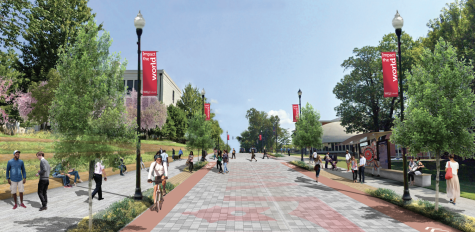
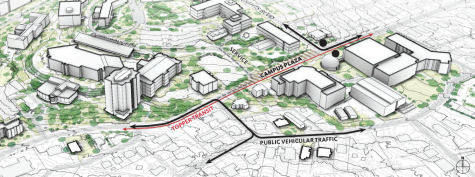
Caboni said it is “highly likely” the new business college will be built where Tate Page formerly stood. He has made several visits to meet with Kentucky legislators in recent weeks and is hopeful that the university will receive funding for the new college.
“We’ve gotten [funding allocation] in the House budget and I’m optimistic that we will have a good chance of having that in the Senate budget,” Caboni said. “I think that’ll be a really positive development for the university.”
Grise Hall, Cherry Hall, Ivan Wilson Fine Arts Center, Kelly Thompson Hall and Gary A. Ransdell Hall were identified as buildings with the greatest need for infrastructure improvement or replacement due to their age and heavy use.
“There’s a lot of infrastructure that you do not see behind the walls, underground, that has exceeded its useful life and needs to be replaced,” Russell said. “It was going to cost [less] money to take [Garrett Conference Center] down than it was to repair and fix that building.”
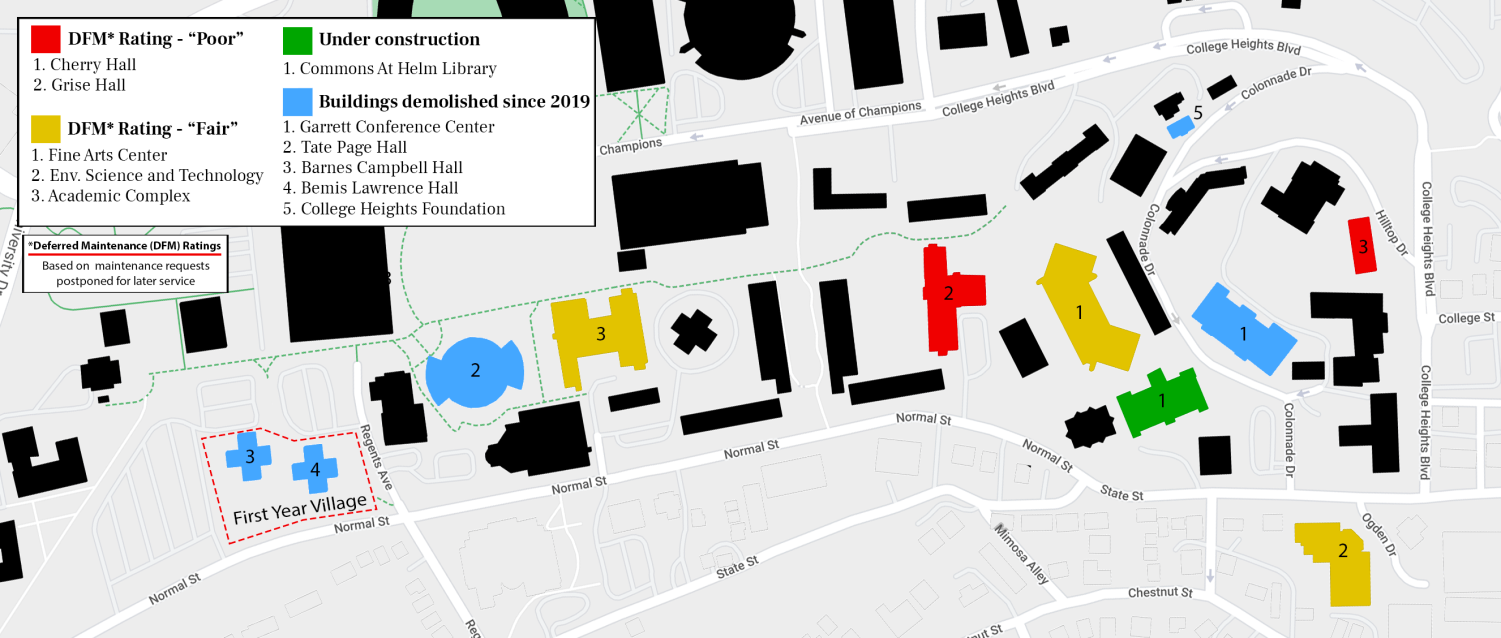
Deferred maintenance is infrastructure in need of improvement that can be put off for a later date. Russell said these improvements can only be made gradually due to the high costs.
“We have about 500 million plus of things that need to be replaced in deferred maintenance and capital improvements that we don’t typically think about,” Russell said. “I’ve got six million square feet [of campus], I’ve got 800 restrooms on campus that need to be taken care of on a daily basis.”
Facilities like pipes, air conditioning, internet infrastructure and classroom necessities all need constant maintenance and improvement, which Russell said must be “chipped away” as time passes.
“This pandemic has created a real Herculean effort by faculty, staff and others to modernize classrooms so that we could teach remotely,” Russell said. “Well, that’s a great idea, and it’s pushed things forward. Part of the Master Plan talks about infrastructure, the classroom and the real need to modernize some of these classroom spaces.”
Russell emphasized that the overall plan is not set in stone and that progress will be made as funding becomes available. The university will ultimately have to assess their financial situation before deciding on any new projects.
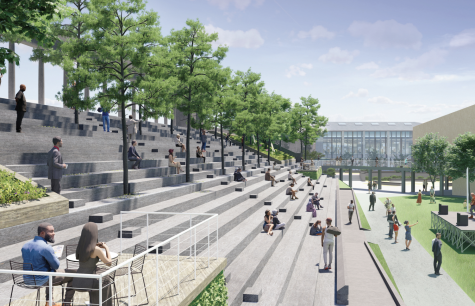
“Now, if something great comes up or a donor comes in and says ‘hey, I’ve got a $25 million gift and I’d like to build a new facility,’ that might accelerate that idea and make it possible for the university to support a building, or landscape, or site work, or whatever project,” Russell said.
Regardless of the difficulties and delays brought on by COVID-19, Russell said these changes are necessary to meet the expectations of both students and faculty in order to keep the university competitive.
“That’s why new buildings get built; we’re literally competing for resources, students, and I think that’s normal,” Russell said. “A lot of people will say ‘oh, we need to stay the same.’ We can’t stay the same, if you’re not growing in some capacity, we just wouldn’t make it.”
Editor-in-Chief Michael J. Collins can be reached at michael.collins527@topper.wku.edu. Follow him on Twitter @mjcollinsnews.

